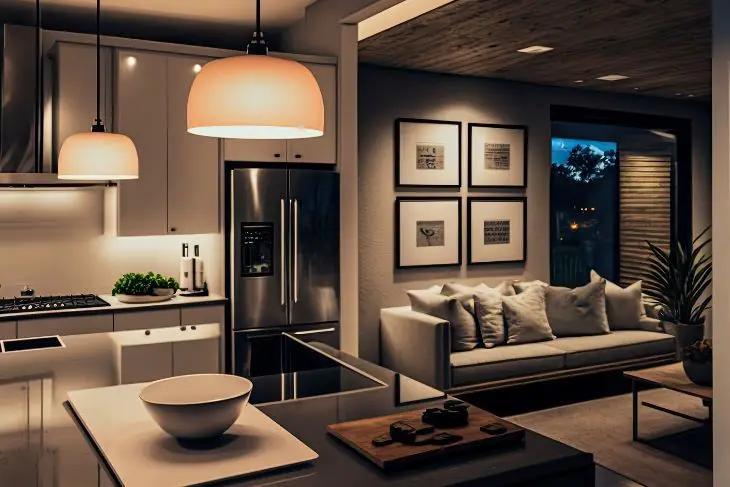Have you ever walked into a room and just felt that wow vibe, wondering how the designer got the space to look so amazing?
Well, I’m here to tell you that lighting is one of the most important elements to achieve a desired effect.
The way you layer your lighting can transform your space from standard to stunning. Learn how to layer your lighting like a pro designer with these manageable steps.
Start With Ambient Lighting
Think of ambient lighting as the natural light that comes through your windows or that soft glow you get from the overhead lights.
It’s all about setting the base layer, giving your room a gentle, overall illumination—you know, the kind that makes everything visible without being too in-your-face.
My advice? Start with a dimmer for your overhead fixtures. This way, you can adjust the brightness to match your mood or the time of day.
Add Task Lighting
After you set up your ambient lighting, it’s time to zero in on task lighting. This allows you to shine some light on the areas where you actually do stuff.
I’m talking about under-the-cabinet lights in the kitchen for channeling your inner chef or that sleek desk lamp that keeps you focused during late-night work sessions.
Think of task lighting as your best bud for reading, cooking, working, or even putting on makeup. It’s all about making those everyday tasks easier on your eyes.
Include Accent Lighting
Accent lighting highlights those special areas or items in your room. Think of it as the spotlight for your favorite painting, those cool collectibles on your shelf, or architectural features like a fireplace or an interesting wall texture.
Don’t be shy with accent lighting; this is your chance to be a bit dramatic. Place a spotlight above your favorite artwork to show it off, or use track lighting to highlight a collection of photos on your wall.
Mix Your Light Sources
Mixing different lighting styles is an easy way to add depth and intrigue. Place that modern floor lamp next to your cozy armchair, and install some retro-inspired pendant lights in the kitchen.
You might be thinking it’s all too random, but here’s my take: it’s all in how you tie it together. Use similar colors, materials, or finishes to create a sense of cohesion. Remember, your home is your canvas and you’re the artist.
Consider Color Temperature
When I say color temperature, I’m talking about whether your light gives off a warm glow or a cool tone.
If you don’t know how to choose, consider the vibe you want in each room. For example, if you want to create a comfy, cozy living room, stick with warmer lights—they’ll make the room feel like a big hug.
For places where you need to concentrate and get things done, like your home office or kitchen, cooler lights can help keep your mind sharp and energized. Mixing these elements up based on each room’s purpose can improve your home’s overall feel.
Now that you know how to layer your lighting like a pro, remember that your home is an extension of your style, and design rules are made to be broken.
Keep experimenting, have fun with it, and never underestimate the power of lighting to transform your home.


